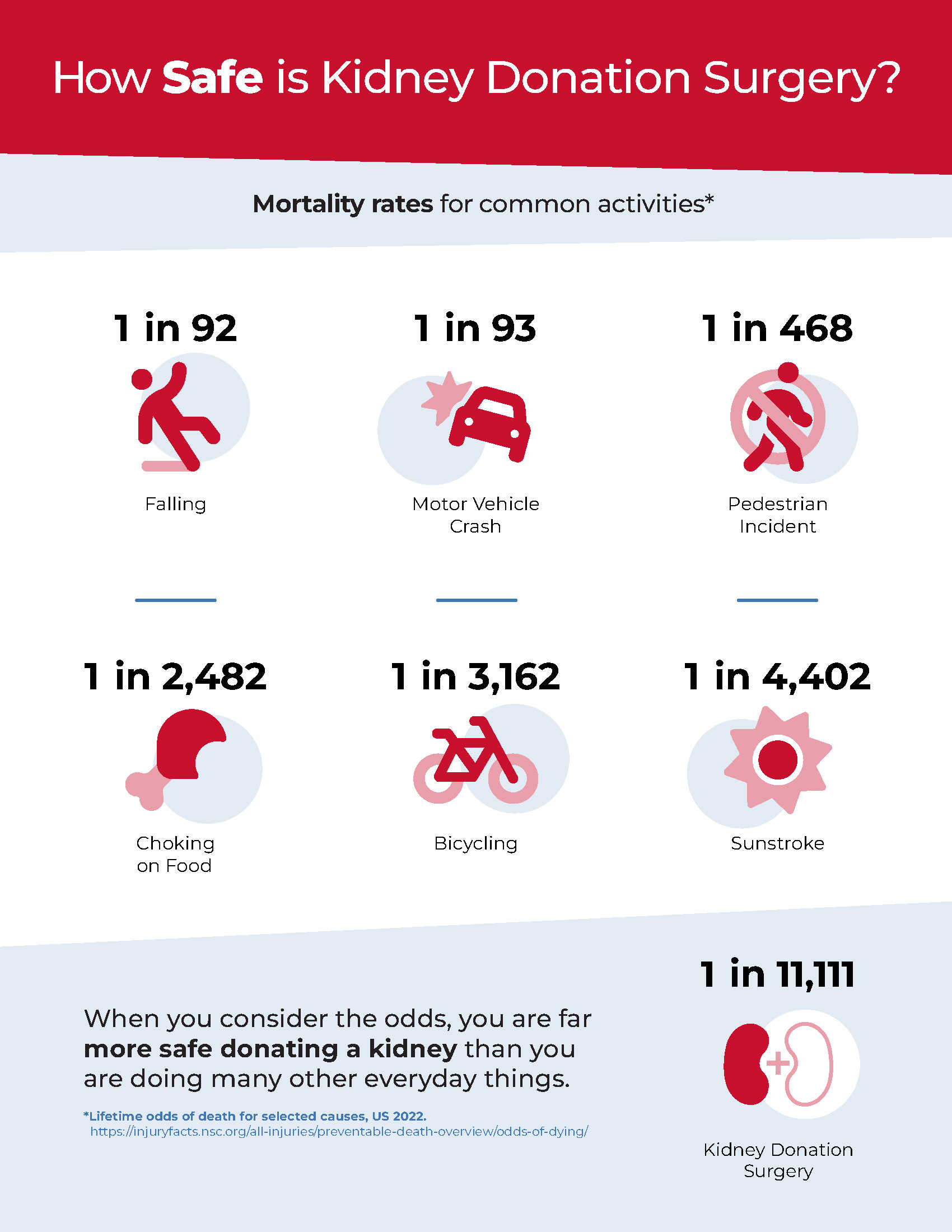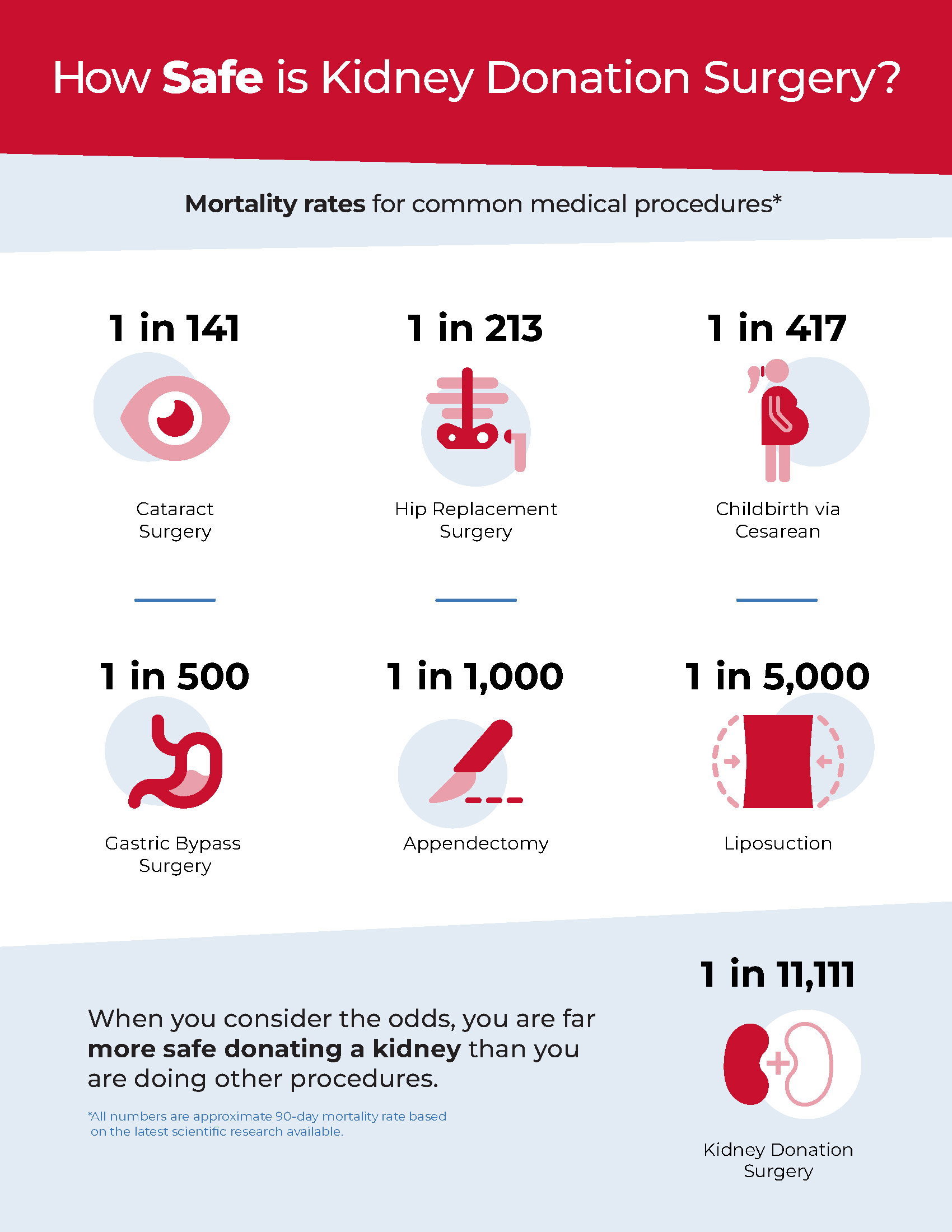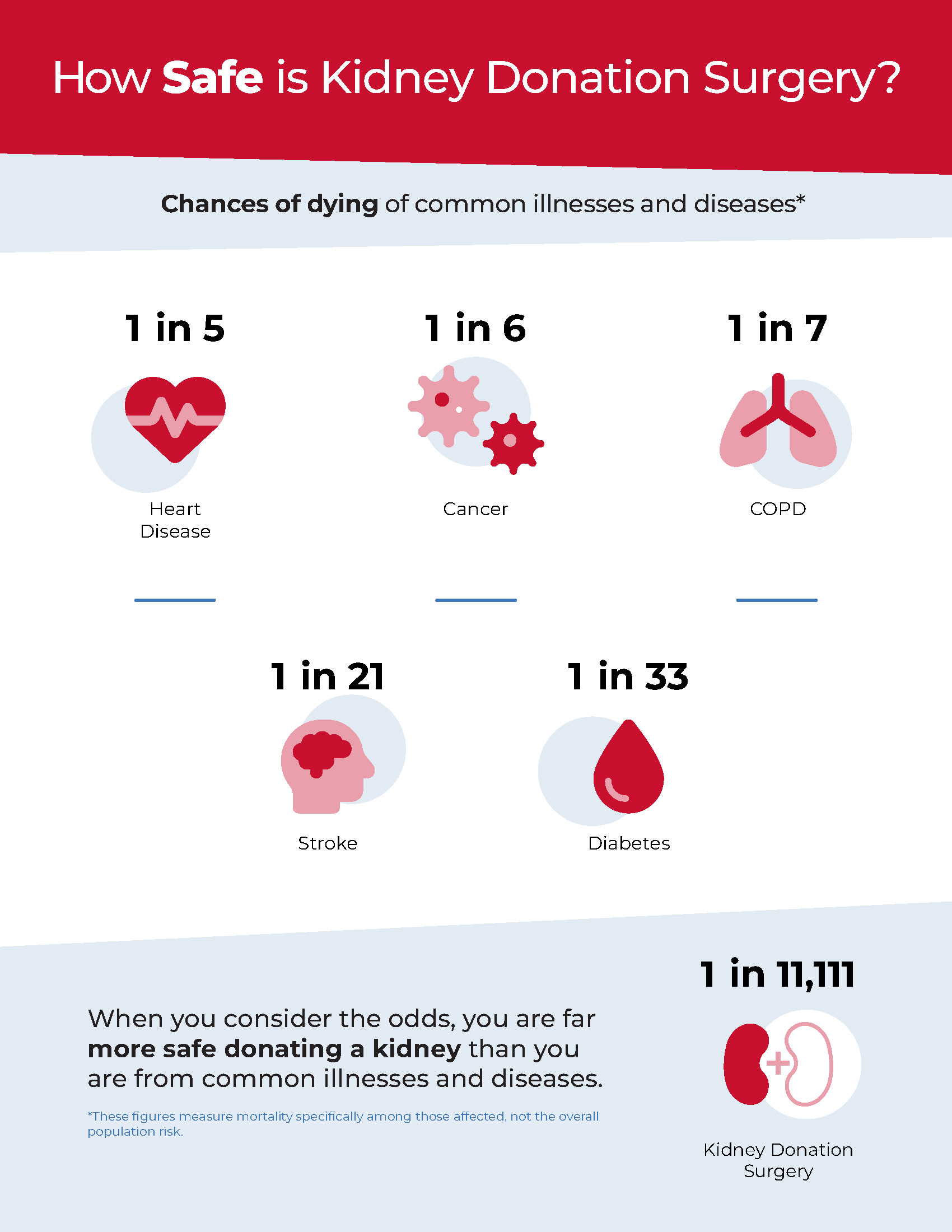Kidney Donation Risks For Living Donors
More than 6,418 living donors in the United States donated a kidney in 2024 (Source: OPTN), and while kidney donation surgery (nephrectomy) is generally a safe procedure, it is not without risks.
If you are considering becoming a kidney donor and wondering about the risks of donating a kidney, below you will find a comprehensive overview of kidney donation risks.



Life Expectancy
Donating a kidney is major surgery but has not been shown to reduce the donor’s life expectancy. Interestingly, people who have donated a kidney outlive the average person. (Reference: Fehrman-Ekholm, Ingela 2,3; Transplantation, 64(7): 976-978, October 15, 1997.)
This fact has fueled an ongoing debate over why kidney donors live longer than expected. Some experts believe that it is simply a selection bias since only healthy people can be selected to be living donors.
Others argue that the altruistic act of giving the gift of life and the happiness and satisfaction that follows has a positive impact and leads to a healthier and longer lifespan.
Surgical Complications
Donors face the possibility of post-operative complications such as bleeding, wound infection, fever, etc. Most of the post-operative complications are generally short-term and can be addressed with quality medical care.
Recovery Time
The two types of kidney removal procedures, laparoscopic and non-laparoscopic, have very different recovery times.
- Laparoscopic kidney removal is less invasive and allows the donor to be discharged one to two days after surgery, allowing the donor to return to work in two to six weeks depending on the donor’s occupation.
- Non-laparoscopic surgery has a longer recovery time. NKR Member Centers generally utilize the laparoscopic procedure.
Mortality Rate
A new study found that kidney donor surgery has a mortality rate of 2.2 in 10,000, which means that on average, for every 10,000 living donor surgeries, 2.2 donors die..
We believe that some of the donor deaths in the United States were avoidable and potential donors will reduce the mortality risk if they have the surgery done at a Donor Care Network Center of Excellence.
Long Term Outcomes
Although kidney donation does not appear to impact life expectancy, research indicates that donating a kidney increases the risk of kidney failure over the donor’s lifetime.
In a 2015 paper published in the Journal of the American Society of Nephrology; lifetime risk of kidney failure for the average person was 326 in 10,000 (about one in 30), 90 in 10,000 (about one in 110) for those who donated a kidney and 14 in 10,000 (about one in 700) for healthy non-donors.
The reason that kidney donors have a lower risk of kidney failure compared to the general population is that kidney donors are much healthier than the average person. When donors and healthy non-donors are compared, there is a kidney failure risk increase of 76 in 10,000 from donating a kidney.
Read more on the long-term risks of donating a kidney:
- JAMA – 2024
Thirty-Year Trends in Perioperative Mortality Risk for Living Kidney Donors - Journal of the American Society of Nephrology – 2015
Reassessing Medical Risk in Living Kidney Donors - Journal of the American Medical Association – 2014
Risk of End-Stage Renal Disease Following Live Kidney Donation - New England Journal of Medicine – 2009
Long-Term Consequences of Kidney Donation